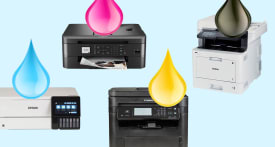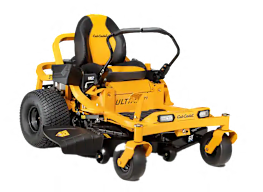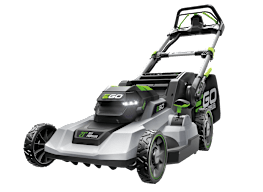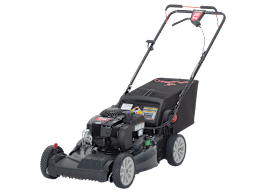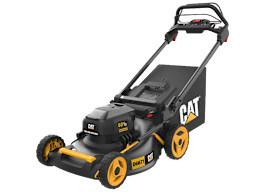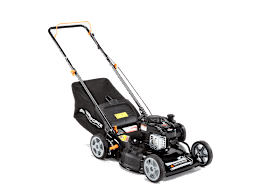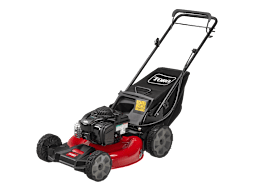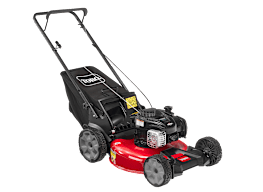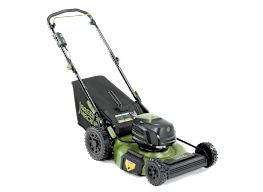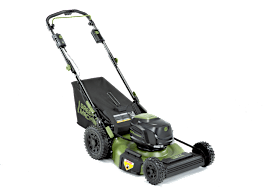How to Get Your Lawn Mower Ready for Mowing Season
Now's the time to check the oil, sharpen blades, and replace parts
When you shop through retailer links on our site, we may earn affiliate commissions. 100% of the fees we collect are used to support our nonprofit mission. Learn more.
It’s an ideal time right now to get your lawn tractor or lawn mower ready for action, so it’s primed to go when you need it.
If you have an electric mower, there’s nothing to do beyond sharpening the blade and charging the battery—or batteries. But a gas mower, particularly one that wasn’t winterized, will need a bit of TLC before its first run of the season.
Prepping Your Lawn Mower for Spring
Here are the steps to follow to get your gear in shape.
1. Change or Check the Oil
After a season of idleness, your mower needs to have its engine oil refreshed. Consult your owner’s manual to see whether it prescribes changing the oil completely or just topping it off.
If your manual says you can just top off your mower, check the engine oil level as described in the manual and add oil as necessary. But don’t use the mower before then. A mower engine can overheat and fail prematurely from insufficient oil. "Running it for a minute or two is unlikely to cause damage," says John Galeotafiore, who heads CR’s home improvement testing team. "It could lead to problems, though, if you use it to cut for more than a few minutes."
2. Fuel Up the Mower
Before you start up your mower, make sure that it has fresh fuel. A mower carrying leftover fuel—gasoline from last season that was never winterized with stabilizer, for instance—shouldn’t be started up right away. Circulating stale fuel could create problems that require you to drain the lines.
Remove old gas from the tank using a turkey baster dedicated to the task. Then fill the tank with fresh fuel and stabilizer.
If the tank holds gas that you winterized last fall, you don’t have to do anything special. Assuming there’s sufficient fuel, your mower should start right up.
And if you ran the mower dry last fall, you can add stabilized gas to the tank now.
3. Sharpen the Blades
Dull blades rip rather than slice grass, and that makes your mower work harder than it needs to. It also isn’t good for the health of your lawn. You can remove the blades yourself and take them to a hardware store or other retailer that sells outdoor equipment for sharpening. The service should cost you about $10.
To remove your mower’s blades, wear heavy leather gloves, remove the spark plug wire, and jam in a short 2x4 to keep the blade from turning as you loosen the bolts. Even tractor blades should be sharpened three times a year.
If you have a battery mower, remove the battery before removing and sharpening the blade or blades. And on battery-powered tractors where you can’t remove the battery, remove the key first, and then remove and sharpen the blades.
4. Mind the Electrical
Your spark plug needs changing about every 100 hours of operation; if not, it can affect engine start-up and overall performance.
With the mower off, remove the spark plug boot and use a socket wrench with a spark plug socket to remove the old plug. Take it to an auto parts store or outdoor-gear dealer and get a new one.
With a battery mower, there are no spark plugs, but you’ll need to charge the battery(ies) before you get to work.
For a tractor, most manuals instruct you to keep the battery indoors on a trickle charger. If you didn’t, fully recharge the battery before starting the season or you’ll reduce battery life. The engine alone can’t fully recharge the battery.
5. Change or Clean Filters
A clean filter helps your engine run efficiently.
Mower filters are typically made of pleated paper and can be removed in seconds. Take the old one to a lawn mower dealer or home center if you’re not sure which one to get. If you know the mower model, it’s just as easy to order a new air filter online.
For a tractor, replace your carburetor’s air filter if it’s paper. If it’s foam, wash it in soap and water. Rinse and squeeze it dry. Some manuals suggest you also oil a foam filter with engine oil. If so, squeeze the filter dry again before you reinstall it.
Tractors have a fuel filter, too. Check your manual for the proper maintenance schedule and procedure.
Top Walk-Behind Lawn Mowers
Our lawn mower ratings include results of our tests of walk-behind mowers, lawn tractors, and zero-turn-radius riders. Consult our lawn mower buying guide for advice on getting the right mower for your property.
If a replacement is in order, look below for four solid options from our tests. Members can view details on these and the more than 100 lawn mowers and tractors in our ratings. When shopping, keep in mind that some mowers may only be available through dealers, not home centers or other mass retailers.
And to get a head start on your outdoor spring cleanup, check out CR’s ratings of chainsaws, in-ground sprinkler timers, and string trimmers.
Best Battery Walk-Behind Mowers
Battery-powered mowers are more eco-friendly than gas mowers, and our tests show that they often run quieter. Our ratings cover both battery self-propelled mowers and push models.
Best Battery Self-Propelled Mower
Best Battery Push Mower
Best Gas Walk-Behind Mowers
Gas mowers generally cost less than their battery counterparts, and run for longer. At Consumer Reports, we test both self-propelled and push models.













